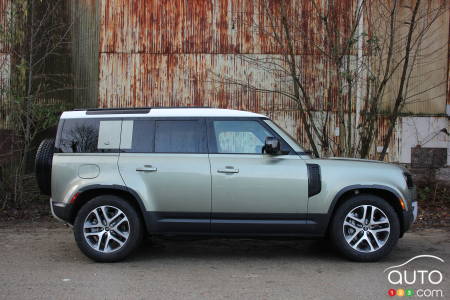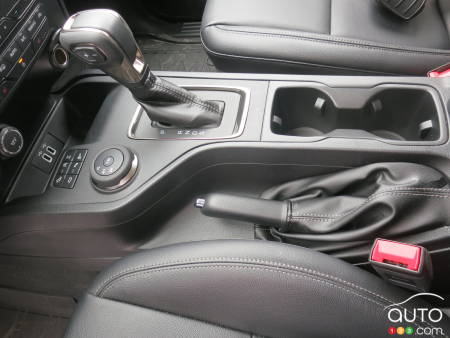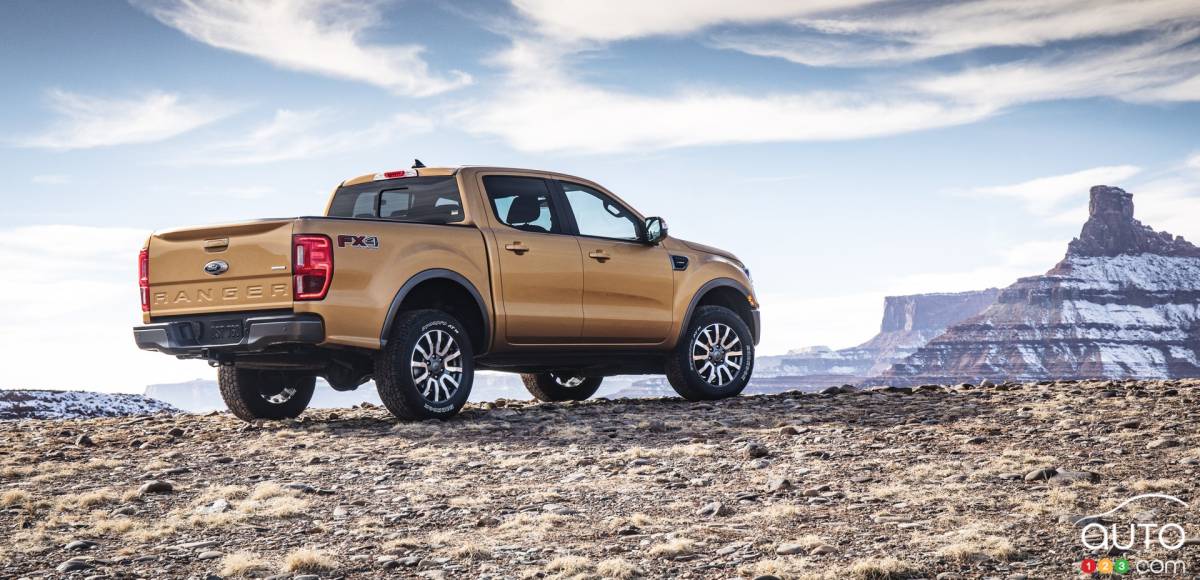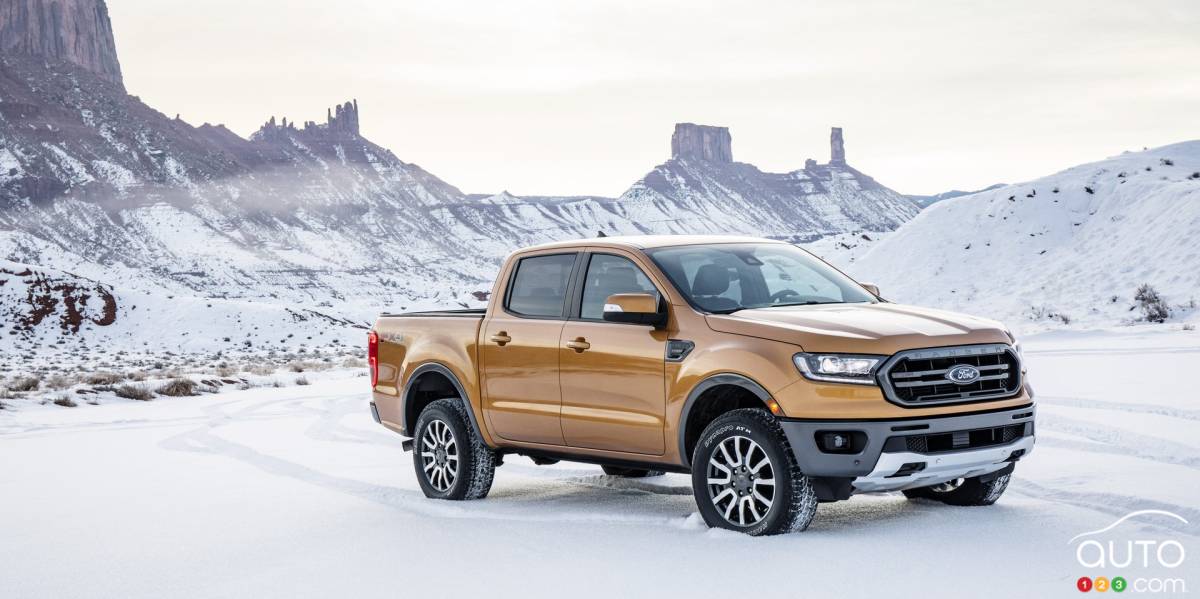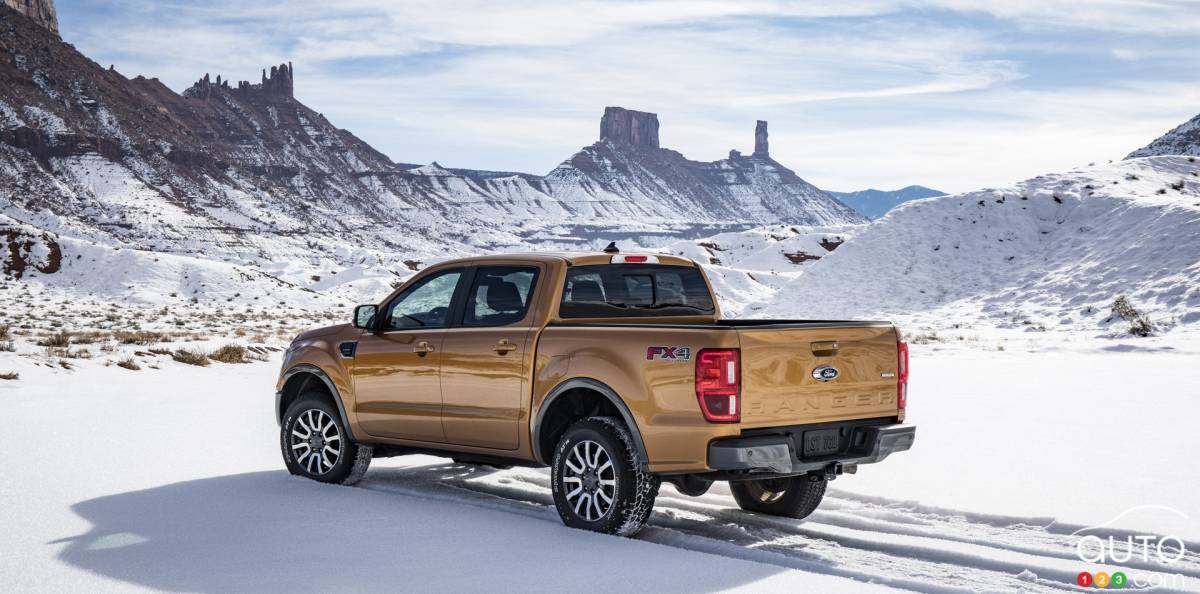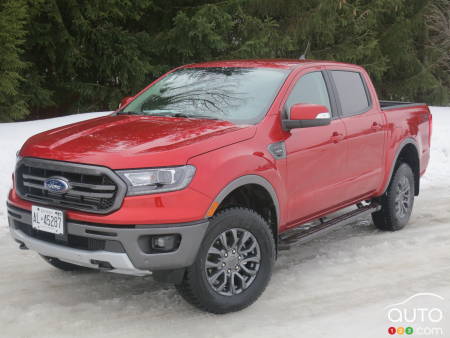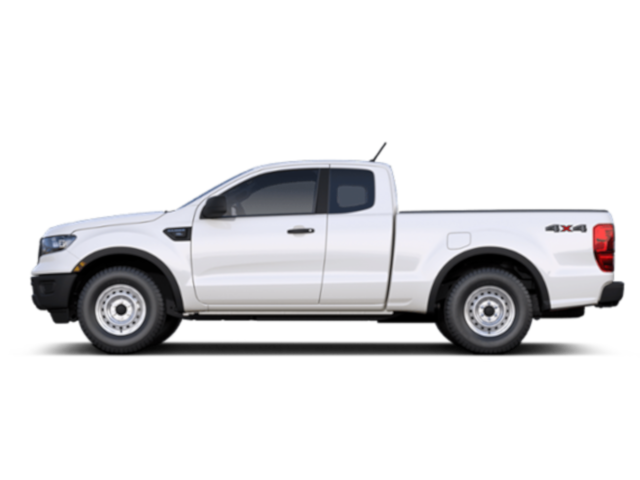Almost everybody remembers the popular “little” Ford Ranger. It first appeared in 1983 to replace the Mazda-based Courier.
In those days, full-size pickup trucks were not as popular as today, though even then that segment was building up momentum. But those were also the days of exploding oil prices and consumers wanted a small pickup that was fuel-efficient.
Japanese automakers had already started the ball rolling in the early 70s by offering small pickups to North American consumers. No American car manufacturer was ready to fully take that leap, so they relied on Japanese products on which they slapped new grilles and their own nameplates.
Eventually GM and Ford came out with their own products in the early 80s (Chrysler would follow suit a little later). The Ranger was thus born. And sales were encouraging and continued to grow, at least until such time as the bigger pickups became more luxurious and enticed buyers with increasingly incredible options.
That was at the turn of the 2010s and at that point Ford, GM and Chrysler abandoned their little pickups; Ford cancelled the Ranger in 2012 and GM followed by killing its Chevrolet Colorado and GMC Canyon.
Specifications for the 2019 Ford Ranger
Read our comparison of the 2019 Ford Ranger and the 2019 Toyota Tacoma
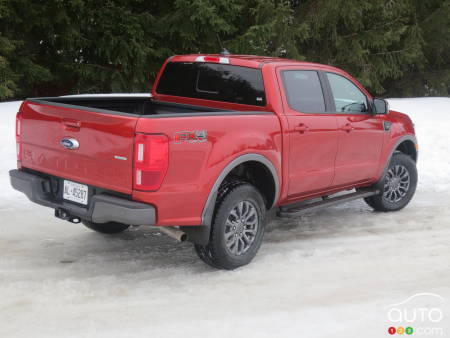
The rebirth
For a while after that, there were only two major players in the segment, Toyota with the Tacoma and Nissan with the Frontier.
Then, in late 2014, GM re-entered the fray with a fully new generation of the Colorado and Canyon, now slightly larger than before. It was a gamble, but GM management felt that many baby-boomers and empty-nesters might get tired of their mid-size SUVs and be on the lookout for a more-useful light-duty truck for their work and leisure activities.
And they were right. That woke the folks at Ford up, and they decided to resurrect the Ranger. The final product is now on the market. So how does it compare with the older Ranger?
No relation
Many people we encountered with our Ranger Lariat tester were impressed by the new vehicle. They all commented on its modern lines, though none said a word about the hefty price point of the new truck (some $52,000 fully loaded and jazzed-up!). Anyways, like it they did, but you could sense the more sentimental among them were a wee bit disappointed it wasn’t visually a little closer to the old Ranger. Because make no mistake, this is not your Dad’s Ranger!
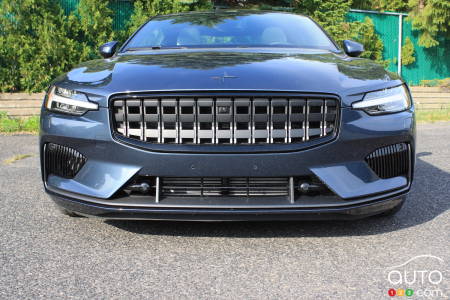
Unveiled at the Detroit Auto Show last year, this new-generation Ranger really struck a chord right out of the box. In fact, the 2019 truck we’re getting takes its design from the Ranger Ford never stopped making for other markets in other countries.
But while it does look like the Ranger you could see in Australia and in Africa, Ford assured us that the American version is beefier and more rugged with tighter gaps between body elements. What’s more, it really does look like a Ford pickup truck! As you can see, it’s more of a mid-size truck than a compact vehicle like its predecessor. In Canada, the Ranger is available in three trims: XL (SuperCab only), XLT (SuperCab or Crew Cab) and Lariat (SuperCab or Crew Cab).
The mechanics
Among the notable numbers in the spec sheet for the 2019 Ford Ranger’s is the 7,500 lb towing capacity, which is exceptional. To manage that hauling ability, the vehicle needs sufficient power form under the hood.
While the old Rangers came with a 4-cylinder engine and the choice of two V6s, the 2019 edition comes with only one powerplant, a 2.3L turbocharged four banger that develops 270 hp and 310 lb-ft of torque. It also comes with a 10-speed automatic transmission similar to the F-150’s. In other words, no manual geabbox (BTW GM just announced it was cancelling the manual box option on its Colorados and Canyons…).
In Canada, all Ranger versions are four-wheel-drive (on demand), and that’s that. How’s that for simplifying the product offering?
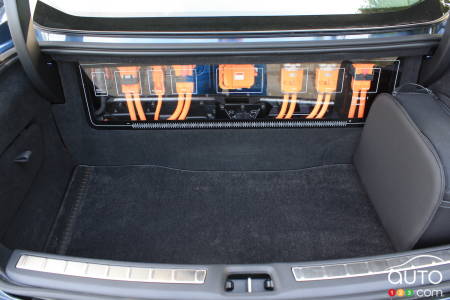
The interior
No surprise, the interior is all new; it’s light-years removed from that of the old Ranger. The steering wheel is a little busy with a lot of buttons, while the dashboard has a pretty simple design with graceful curves. The digital instrumentation is concentrated in front of the driver while the middle of the dash is occupied by a regular sized screen for the radio, the rear camera and the GPS (which is easy to work with, by the way).
Right under the screen are the commands for the radio and the heather and ventilation. Dark wood finishing adorns the upper part of the dash in front of the passenger, with the glove box right beneath. The console includes the gear lever and the rotary knob for selecting four-wheel-drive. There’s room for two cupholders and some USB plugs. The leatherette-covered front seats are comfortable while the rear bench seat can accommodate three passengers in adequate comfort. The seat bottom can be lifted to reveal a few small storage compartments.
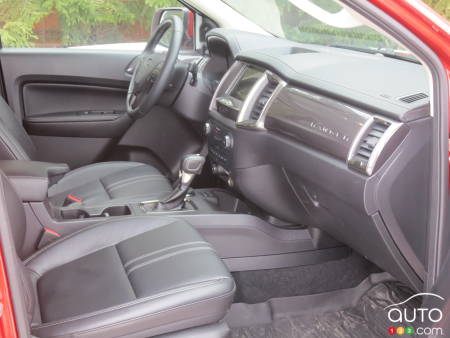
Since it’s a pickup, it has a bed. Our Crew Cab tester had a 5-ft box. Unfortunately, its floor isn’t more than 44 inches wide between wheel wells so it can’t accommodate a 4 x 8 plywood board lying flat.
While the tailgate is easy to lower and lift, there are no steps whatsover to help make climbing aboard easier.
The Ranger can carry up to 1,650 lb of cargo with the short bed, Crew Cab 4 x 4 configuration.
On the road
OK, so how does it drive? Obviously, this Ranger is much more comfortable than its predecessor. Being four-wheel-drive, the truck has to have a 9-inch ground clearance, so that climbing aboard requires a bit of acrobatics – although the running boards largely solve that problem.
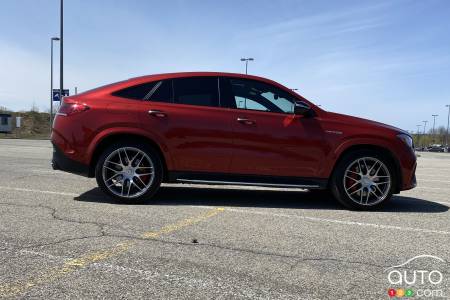
This Lariat edition has a push-button to start the engine. Shifting into gear is quickly done and as the pickup starts rolling, you can feel pretty quickly that yes it’s a truck but no it doesn’t ride rough. The suspension is firm but not stiff and the Ranger offers a certain dose of comfort. What’s more, it is pretty quiet if you compare it to other pickups of the same category. Though there is some engine noise inside, it’s not annoying, especially on the highway.
Initial acceleration is easy and the transmission shifts are very smooth. If you want some sportier driving, there’s a + and – command on the side of the gearshift knob that enable the driver to choose the speeds they want to accelerate or decelerate.
When trying to determine how quickly the new Ranger can reach 100 km/h form a stop, we noted the positive sound the engine produces when pushed. (Is it Engine Sound Enhancement through the intake manifold or through the radio speakers? Ford’s not saying). In any case, it does sound like a sports car engine! BTW the truck can get to 100 km/h in some seven seconds and the passing speeds are very good.
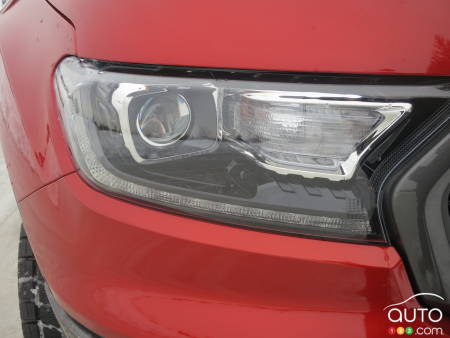
The steering is a little light and the vehicle does sometimes lean when cornering at speed. Driving on a very windy day, we felt some body roll, though nothing scary. Braking could have been a little shorter but I chose to blame that on the cold and wintry pavement and probably the Toyo Observe GSI 5 winter tires. These tires were a little noisy but they were efficient on icy roads.
Our regular off-road trail being snowed in, it was difficult to evaluate the four-wheel-drive capabilities of the Ranger. We did manage to find an area with a snowy and icy surface that convinced us the light truck could easily tackle winter and some off-road situations thanks to Ford’s Terrain Management System.
At very low speed, we could have taken advantage of the Trail Control in 4-Lo. By the way, to get into four-wheel driv, simply twist the knob on the console… it’s as easy as that.
Road visibility is great all around but it takes a little practice to get used to parking the vehicle in a mall parking lot.
With a 4-cylinder engine, one would expect good fuel economy, wouldn’t one? This test was done during some lingering cold days of winter, and the Ranger was used mostly in urban situations, with some highway driving. Consequently, according to calculations at the pump, it yielded an average of 14.3L/100 km while the on-board computer indicated 13.3L in the instrument panel.
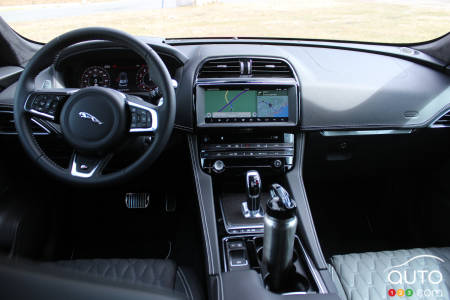
The price
The base price of a Ranger XL is $33,069, while the Ranger 4 x4 Crew Cab starts at $42,289. Add to that a $100 excise tax (for the A/C, believe it or not), $550 for the Hot Pepper red paint, $3,000 for the Lariat trim, $1,400 for the FX4 off-road package with electronic-lock 3.73 rear differential, $150 for the mud guards, $ 170 for the floor liner, $700 for the running boards, $600 for the trailer tow package, $500 for the Sport appearance package, $600 for the bedliner and $1,800 for destination and delivery, and the total invoice comes to $51,859…plus tax!
The competition
As mentioned earlier, this comes mainly from Toyota and its Tacoma, Nissan and its Frontier, GM and its Chevrolet Colorado and GMC Canyon and probably a little bit from Honda and its Ridgeline and soon Jeep with its upcoming Gladiator.
All are about in the same price range but few are as comfortable with the same capabilities. And what if Ford would offer the Raptor version of the Ranger like it does elsewhere in the world?
